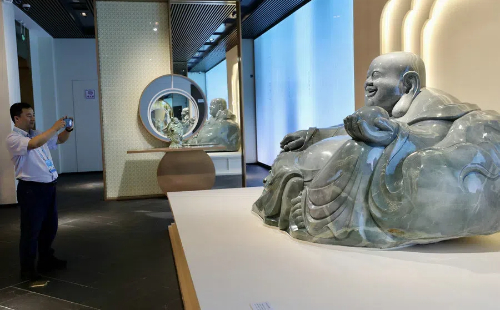Joy of Laughing Buddha celebrated in Ningbo

An exhibition about the Laughing Buddha at the Sixth World Buddhist Forum, which runs through Thursday in Ningbo, Zhejiang province. [Photo by Zhang Wei/China Daily]
According to legend, during the tumultuous years of the Five Dynasties and Ten Kingdoms (907-960) period in the 10th century, a monk could be seen wandering about carrying a hemp sack, which is called a budai in Chinese.
Known as a result as Monk Budai, he visited Fenghua in today's Ningbo in Zhejiang province, to spread Buddhism and before he died, he revealed that he was the manifestation of the Maitreya (or future) Buddha.
Since then, Budai has become widely worshipped, and is depicted as having a potbelly and laughing, making him a symbol of joy and optimism. He is also referred to as the "Laughing Buddha", or Mi Le, in Chinese.
As a part of the ongoing Sixth World Buddhist Forum in Ningbo, which runs until Thursday, an exhibition about the life of the Laughing Buddha, and his cultural influence, is being held at the Maitreya Altar on Mount Xuedou, where there is a huge seated bronze statue of him.
In addition to the artifacts and objects on display, digital reconstructions further engage the audience, creating an atmosphere tinged by the happiness, compassion, open-mindedness and harmony of Buddhism.


